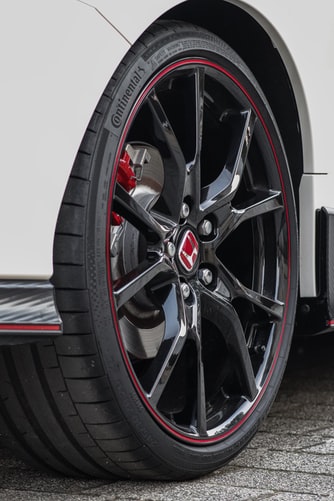When shopping for 2013 Hyundai Elantra brake pads and rotors, you’ll probably come across a huge range of product options. And if you’re like most shoppers today, it’s all too easy to end up with decision fatigue or analysis paralysis. Second-guessing yourself isn’t useful, but you do want to choose high-quality parts at reasonable prices. This quick primer can help you better understand brake parts plus what to look for before you buy.
What Are the Best Brake Pads?
Naming the best brake pads can be a little tricky, considering all the options out on the market. You may see performance pads designed for racing – these usually contain carbon-ceramic, para-aramid or ferro-carbon blends. Most brake pads for cars made for the consumer market are organic, semi-metallic or ceramic. And each type has its unique set of benefits.
Organic pads are the most economical. But make no mistake – they still deliver solid performance for commuter and everyday driving. They’re made with rubber, glass, fiberglass or carbon and bonded with resin. Key advantages include quiet and low-dust braking.
Semi-metallic brake pads contain steel, iron, copper or other metals combined with graphite lubricant. Metals are better at conducting heat, so these pads perform well under higher temperatures. They’re pricier than organic pads, plus they create more dust and noise. Thanks to the excess heat, they’re also a little harder on your rotors.
Ceramic pads usually blend ceramic particulars with fine copper threads. They’re even quieter than organic pads and produce very little dust. You’ll pay much more for ceramic pads, but drivers with heavier-duty braking patterns may find them more useful.
What Rotors Do You Need?
Brake pads are only half the equation. You also need high-quality rotors to ensure that your vehicle has dependable stopping power. Rotors usually come in blank, slotted and drilled versions. For high-performance applications, you may also see rotors that are both drilled and slotted.
Blank, drilled and slotted rotors also have performance advantages. As the name implies, drilled rotors have holes in their metal discs. These holes are arranged in certain patterns for heat dispersion to prevent warping, but they also allow water to pass through – helpful in heavy rains. Slotted rotors allow water, dust and debris to slide off their surfaces more easily. The major disadvantage to drilled and slotted rotors is reduced structural integrity. Most commuters get solid use from blank rotors, which balance braking power with quiet performance and lower costs.
How Should You Shop for Pads and Rotors?
Whether you shop online or in a store, so many products clamor for your notice. Even with Hyundai Elantra brake pads and rotors, it can be a little challenging to cut through the copy and figure out what you’re getting for your money. Your driving needs and conditions should be foremost in your mind when choosing a new set of pads. When shopping, be sure to choose a retailer with a solid reputation, good customer service and a wide range of product options.


